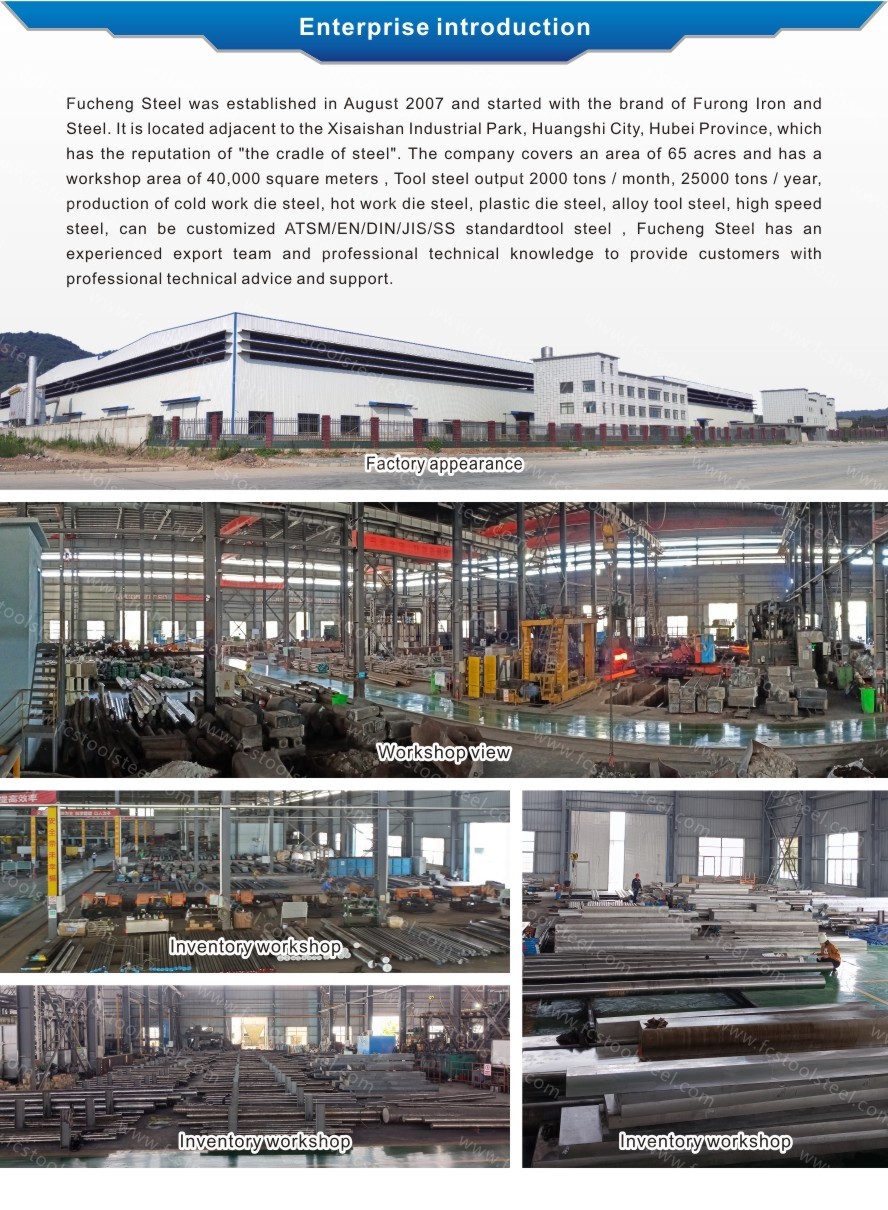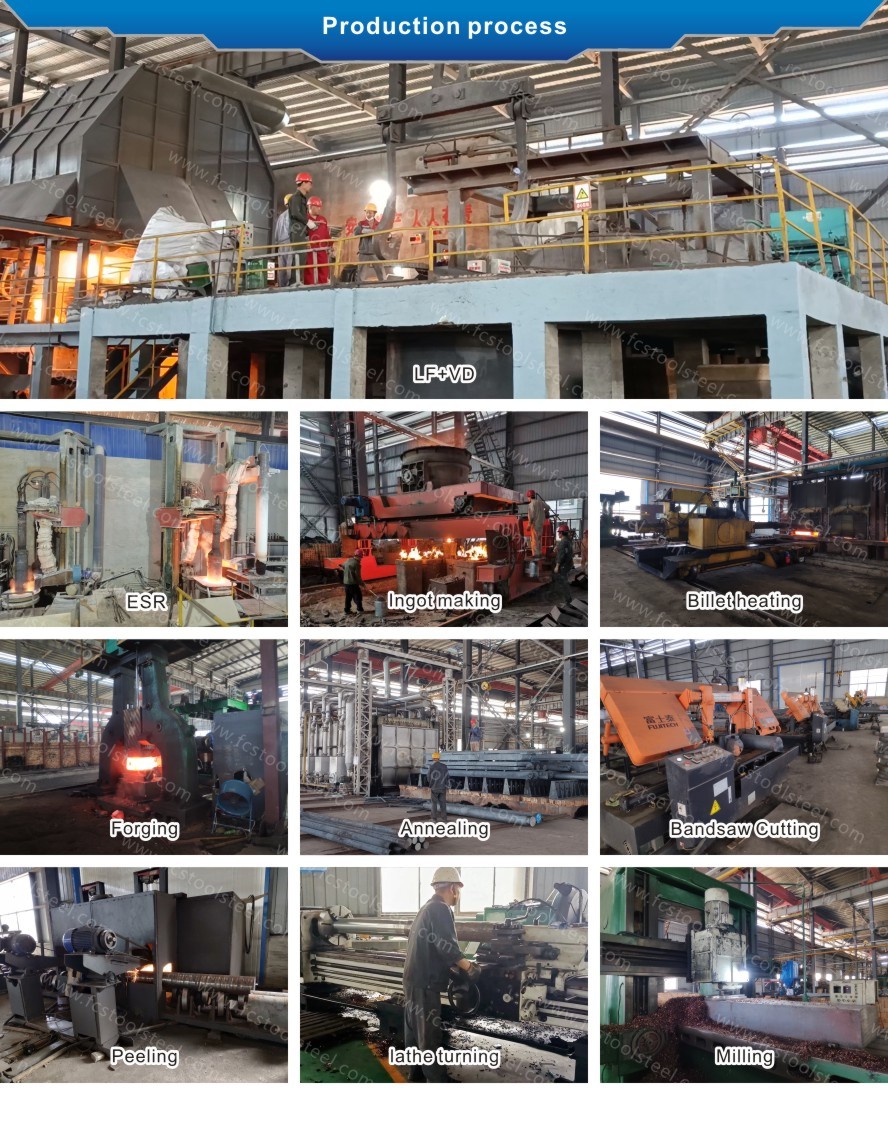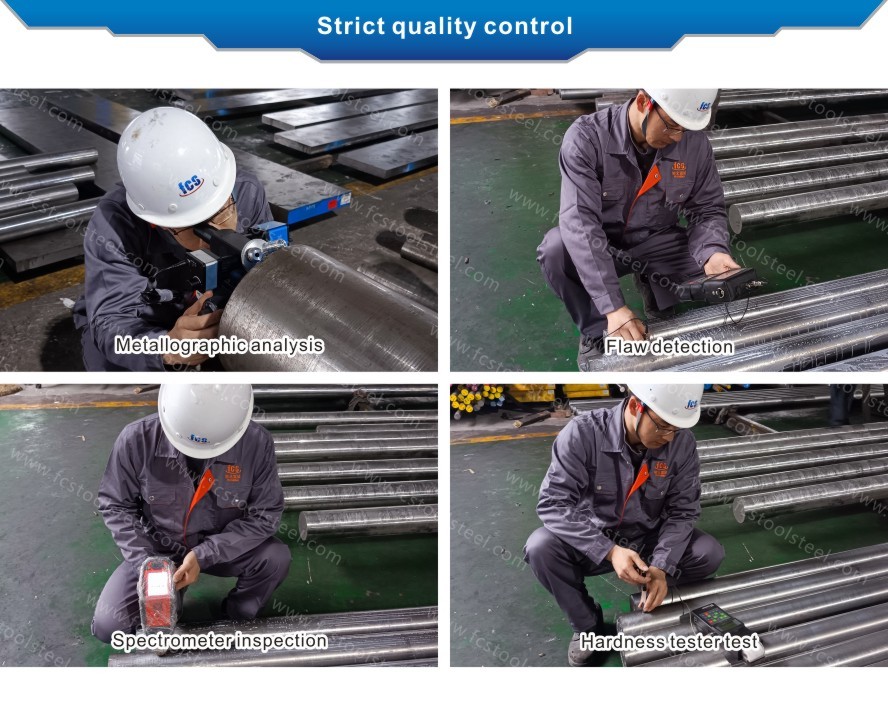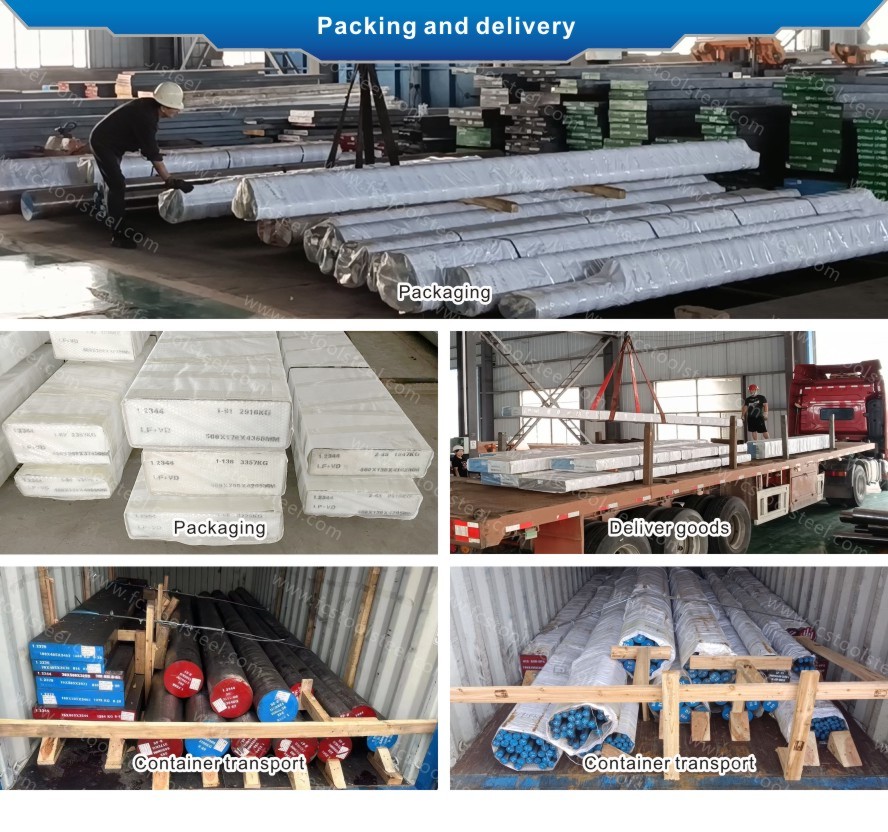
H14 Hot Work Tool Steel
H14 steel is suitable for aluminum, magnesium and zinc hot extrusion die, die casting die, precision forging die, plastic die, hot working shear blade and hot forging die.
- fucheng steel
- China
- 1 Month
- 2000 Tons/Month
- Information
- Video
H14 HOT WORK TOOL STEEL
| Smelting and Manufacture Method: | LF+VD+Forged |
| Delivery Condition: | Annealed |
| Delivery hardness: | ≤235 HBS |
| UT Test Standard: | Sep 1921-84 Class3 D/d,E/e |
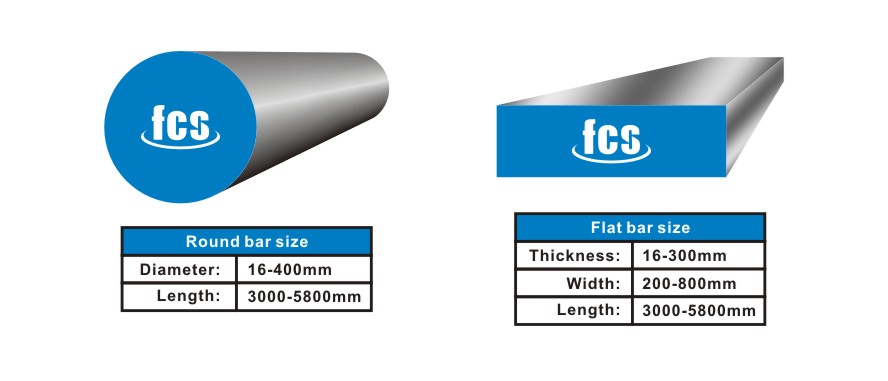
 H14 STEEL GRADE COMPARISON AND CHEMICAL COMPOSITION COMPARISON
H14 STEEL GRADE COMPARISON AND CHEMICAL COMPOSITION COMPARISON
| Standard/Steel Grade | Chemical Composition(%) | |||||
| C | Si | Mn | Cr | W | ||
| ASTM | H14 | 0.35~0.45 | 0.80~1.20 | 0.20~0.50 | 4.75~5.50 | 4.00~5.25 |
APPLICATION
H14 steel is suitable for aluminum, magnesium and zinc hot extrusion die, die casting die, precision forging die, plastic die, hot working shear blade and hot forging die.
H14 STEEL CHARACTERISTICS
H14 mold steel is a chromium tungsten type hot work mold steel, which has higher red hardness and wear resistance than the chromium molybdenum type hot work mold steel represented by H13; Compared with the tungsten based hot work mold steel represented by 3Cr2W8V, the red hardness is lower, but the toughness and thermal fatigue resistance of this steel are significantly better than 3Cr2W8V, and the oxidation resistance and erosion resistance are also better than 3Cr2W8V.
H14 mold steel is mainly used for manufacturing forging molds, hot extrusion molds, die-casting molds, precision forging molds, etc. that withstand high impact forces. Due to its excellent toughness and fatigue resistance, this steel can also be used to manufacture wear-resistant materials such as springs and bearings under high temperature and pressure.
The heat treatment process for H14 mold steel is: quenching temperature is 840-880 ℃, and tempering temperature is 540-680 ℃. During the quenching process, preheating is necessary to reduce quenching stress and deformation. After quenching, tempering treatment is required to eliminate quenching stress, improve toughness and stability. The selection of tempering temperature should be determined based on the working conditions and hardness requirements of the mold.
The hardness of H14 mold steel is relatively high, generally between HRC48-54. In order to improve the service life of the mold, nitriding or plating treatment can be carried out on the surface of the mold. Nitriding treatment can improve the hardness and wear resistance of the mold, while maintaining high toughness and fatigue resistance. Plating treatment can provide a protective film to prevent oxidation and corrosion on the surface of the mold, and extend the service life of the mold.
H14 mold steel has good processing performance and can be used for machining operations such as cutting, drilling, and milling. However, due to the high hardness of the steel, attention needs to be paid to the selection of cutting tools and wear during processing. In addition, H14 mold steel is prone to generating debris and heat during processing, and attention should be paid to cooling and lubrication to prevent tool overheating and wear.
